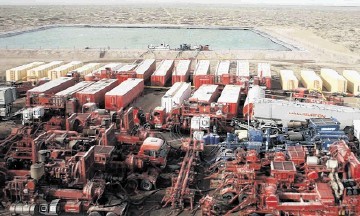
Controversy over hydraulic fracturing (HF) or “fracking” for shale gas has split the bed-rock of public opinion. Proponents point to the promise that HF will shift the balance in global value chain energy supply.
Opponents portray HF as an environmental peril to be banned, even though the process has been part and parcel of the conventional oil and gas industry for many decades, not least in the North Sea.
Iesta: International Energy Skills & Training Alliance, not only addresses the practical skills and training competencies required by the industry, but also includes training providers that encompass the study of law, policy, economics, management, dispute resolution and leadership for the international energy and natural resource sectors.
A highly divisive topic, it is important that the industry is educated in the legal and technological intricacies involved with shale-related onshore fracking as well as assessing the potential environmental effects. At this point in the debate, education on the topic is vital.
HF technology has been used since the 1940’s and application of this technology to shale deposits increases recovery of natural gas up to twenty times.
The availability of shale gas has been referred to as “revolutionary” and “game-changing” for the oil and gas market, with forecasts of a 40% increase in recoverable reserves.
World natural gas reserves are currently estimated to be around 6,622trillion cu.ft (TCF). The addition of shale gas doubles availability of natural gas.
Unconventional gas is eventually expected to supply 10% of the European market. Shale-gas supply is already having an impact on the development of high-cost LNG projects targeted at premium Asian markets.
Removing uncertainty over HF regulation is necessary before the shale-gas resources described above can attract investment, especially in Europe where activity is currently at a very low level, with bans or moratoria in place in a number of EU countries.
A five-part regulatory framework for HF is recommended.
Firstly, focus on designing the well stimulation plan to avoid out-of-zone complications and to protect shallow aquifers.
Secondly, ensure well integrity by sealing and cementing casing to isolate fractured formations, particularly aquifers.
Thirdly, prohibit the use of BTEX compounds, with incentives for adoption of “green” practices to reformulate additives and reduce water consumption.
Fourthly, operators must submit programs for monitoring water quality and seismic activity.
Finally, service companies should provide information to a registry identifying the companies, their well locations, and the chemical components in HF fluids. Specific formulations would be regarded as commercially sensitive.
Iesta member companies, Dundee University’s Centre for Energy, Petroleum and Mineral Law and Policy (CEPMLP) and Intertek have collaborated to bring education and debate on the topic to Aberdeen this month. For more details www.iesta.co.uk
Dennis Stickley is CEPMLP course director, principal instructor and international legal expert in petroleum law